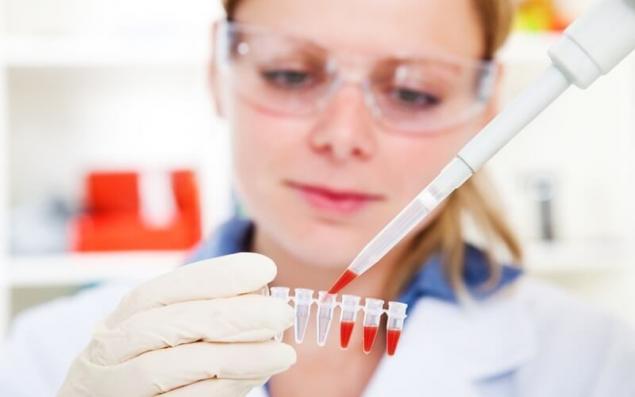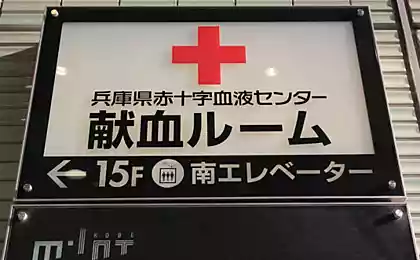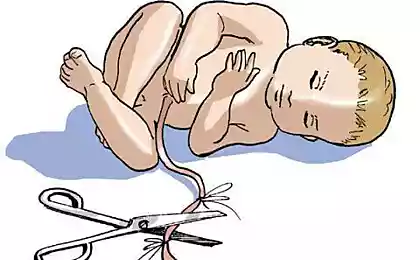494
9 blood counts, which will tell all about your health
So, what tells us our blood? The blood test we rent practically at any disease. And competent doctor will send you first thing “for blood.” For a General analysis of the blood or taken from a vein or from a finger. And the primary analysis can be taken not on an empty stomach. But the expanded is impossible in any case! Remember that!
The reason for this requirement is simple: any food changes your blood sugar, and the analysis is not objective. It is best to donate blood after a short rest (which is why we often go for a test this morning). Again, for the purity of the study.
A competent doctor will take into account your gender and physiological state. Because, for example, in women during PMS increases ESR and decreases the number of platelets.

The indicators of the General analysis1. Hemoglobin(Hb)Is the blood pigment contained in the erythrocytes, the main function is to transport oxygen from the lungs to the tissues and excretion of CO2. Normal levels for men are 130-160 g/l , for women — 120-140 g/l If hemoglobin is lowered, this suggests a possible anemia, blood loss or hidden internal bleeding with the defeat of the internal organs. The increase in hemoglobin, usually seen in diseases of the blood and certain types of heart failure.
2. The erythrocytesIs directly the red blood cells, containing hemoglobin. Normal values in men (4.0–5.1) * 10 to 12-degree/l and in women (3.7–4.7) * 10 to 12-degree /L. Overabundance of red blood cells happens in healthy people at high altitude in the mountains, as well as heart defects, diseases of the bronchi, lungs, kidneys and liver. Sometimes this indicates an excess of steroid hormones in the body. The lack of red blood cells indicates anemia, acute blood loss, chronic inflammatory processes. And sometimes it happens in late pregnancy.
3. LarrityWhite blood cells. Are produced in the bone marrow and lymph nodes protect the body from external influences. The norm for all (4.0–9.0) x 10 to the 9th /L. the Excess indicates the presence of infection and inflammation. A lot of them happen in different situations, sometimes associated with diseases. They can jump from physical tension, stress or pregnancy. But it happens that leukocytosis is associated with diseases, such as:
4. Platelets areCells that provide blood clotting, are involved in the formation of blood clots. Normal number — (180-320) * 10 in 9 degrees/l. If they are overweight, then possibly you have tuberculosis, ulcerative colitis, cirrhosis of the liver. This happens even after surgeries or using hormonal drugs. Reduced their content happens under the influence of alcohol, heavy metal poisoning, blood diseases, renal failure, diseases of the liver, spleen, hormonal imbalance. As well as the action of certain drugs: antibiotics, diuretics, digoxin, nitroglycerin, hormones.
5. ESR or RBEthe erythrocyte. It is an indicator of the disease. Usually ESR is increased by 2-4 days of the disease, and reaches a peak in the recovery period. Rate for men is 2-10 mm/h and for women 2-15 mm/h. are Elevated with infections, inflammations, anaemia, kidney diseases, hormonal imbalance, shock after injuries and operations, during pregnancy, after childbirth, during menstruation, and low is observed in circulatory failure, anaphylactic shock.
6. Glucosethe Concentration of glucose in a healthy body should be 3.5 to 6.5 mmol/liter. Excess glucose evidence insufficient and irregular nutrition, hormonal diseases, lack of — about diabetes.
7. Total proteinNorm is 60-80 grams /liter. With the deterioration of the liver, kidney, malnutrition decreases it. This often happens after the strict diets.
8. Bilirubin totalBilirubin must not show above 20.5 mmol/liter. It is an indicator of liver function. Hepatitis, cholelithiasis or destruction of red blood cells bilirubin increases.
9. CreatinineCreatinine is responsible for your kidneys. Its normal concentration is 0.18 mmol/liter. Excess is a sign of kidney failure, if below the norm — so you need to increase immunity.published
P. S. And remember, only by changing their consumption — together we change the world! ©
Join us in Facebook , Vkontakte, Odnoklassniki
Source: marketium.ru/chitajte-po-krovi/
The reason for this requirement is simple: any food changes your blood sugar, and the analysis is not objective. It is best to donate blood after a short rest (which is why we often go for a test this morning). Again, for the purity of the study.
A competent doctor will take into account your gender and physiological state. Because, for example, in women during PMS increases ESR and decreases the number of platelets.

The indicators of the General analysis1. Hemoglobin(Hb)Is the blood pigment contained in the erythrocytes, the main function is to transport oxygen from the lungs to the tissues and excretion of CO2. Normal levels for men are 130-160 g/l , for women — 120-140 g/l If hemoglobin is lowered, this suggests a possible anemia, blood loss or hidden internal bleeding with the defeat of the internal organs. The increase in hemoglobin, usually seen in diseases of the blood and certain types of heart failure.
2. The erythrocytesIs directly the red blood cells, containing hemoglobin. Normal values in men (4.0–5.1) * 10 to 12-degree/l and in women (3.7–4.7) * 10 to 12-degree /L. Overabundance of red blood cells happens in healthy people at high altitude in the mountains, as well as heart defects, diseases of the bronchi, lungs, kidneys and liver. Sometimes this indicates an excess of steroid hormones in the body. The lack of red blood cells indicates anemia, acute blood loss, chronic inflammatory processes. And sometimes it happens in late pregnancy.
3. LarrityWhite blood cells. Are produced in the bone marrow and lymph nodes protect the body from external influences. The norm for all (4.0–9.0) x 10 to the 9th /L. the Excess indicates the presence of infection and inflammation. A lot of them happen in different situations, sometimes associated with diseases. They can jump from physical tension, stress or pregnancy. But it happens that leukocytosis is associated with diseases, such as:
- bacterial infections;
- inflammation;
- allergic reactions;
- leukemia;
- by hormonal drugs, some heart medications (like digoxin).
4. Platelets areCells that provide blood clotting, are involved in the formation of blood clots. Normal number — (180-320) * 10 in 9 degrees/l. If they are overweight, then possibly you have tuberculosis, ulcerative colitis, cirrhosis of the liver. This happens even after surgeries or using hormonal drugs. Reduced their content happens under the influence of alcohol, heavy metal poisoning, blood diseases, renal failure, diseases of the liver, spleen, hormonal imbalance. As well as the action of certain drugs: antibiotics, diuretics, digoxin, nitroglycerin, hormones.
5. ESR or RBEthe erythrocyte. It is an indicator of the disease. Usually ESR is increased by 2-4 days of the disease, and reaches a peak in the recovery period. Rate for men is 2-10 mm/h and for women 2-15 mm/h. are Elevated with infections, inflammations, anaemia, kidney diseases, hormonal imbalance, shock after injuries and operations, during pregnancy, after childbirth, during menstruation, and low is observed in circulatory failure, anaphylactic shock.
6. Glucosethe Concentration of glucose in a healthy body should be 3.5 to 6.5 mmol/liter. Excess glucose evidence insufficient and irregular nutrition, hormonal diseases, lack of — about diabetes.
7. Total proteinNorm is 60-80 grams /liter. With the deterioration of the liver, kidney, malnutrition decreases it. This often happens after the strict diets.
8. Bilirubin totalBilirubin must not show above 20.5 mmol/liter. It is an indicator of liver function. Hepatitis, cholelithiasis or destruction of red blood cells bilirubin increases.
9. CreatinineCreatinine is responsible for your kidneys. Its normal concentration is 0.18 mmol/liter. Excess is a sign of kidney failure, if below the norm — so you need to increase immunity.published
P. S. And remember, only by changing their consumption — together we change the world! ©
Join us in Facebook , Vkontakte, Odnoklassniki
Source: marketium.ru/chitajte-po-krovi/
Failure or rejection of: what is the difference
You will be easier to live if you throw out of the house these 3 things!
























